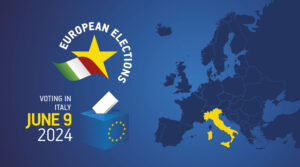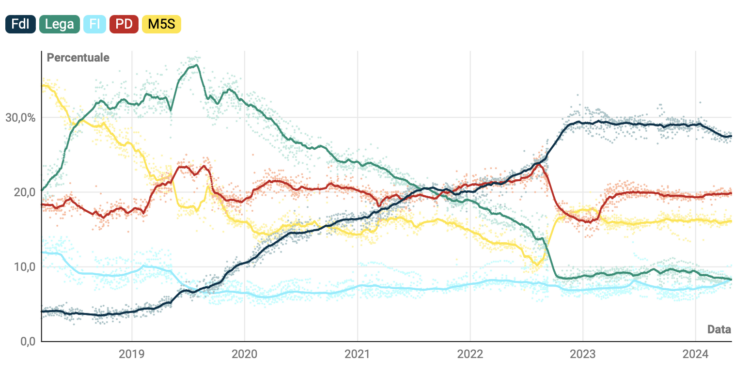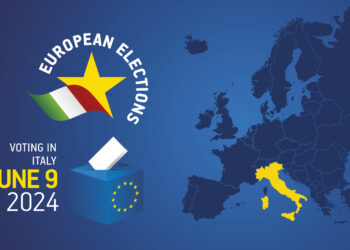Brussels – The overtaking of Forza Italia over the League, the collapse of Matteo Salvini‘s party, and the stability of the popularity of the 5-Star Movement and the Democratic Party in recent months: These are some of the themes that emerge from the analysis of preferences in the polls of the top five Italian parties from the 2018 general elections to the recently published results.
The European elections are approaching, and the vote will also affect Italy’s delicate political balance. Political polls in Italy and other countries hardly stop. A representative sample of people (usually around 1,000) are asked questions such as, “If you voted tomorrow, who would you choose in the elections?” Or, “Who do you plan to vote for in the next European elections?” Polls can be useful, but projecting consensus data collected from a single survey onto the entire population is an exercise fraught with pitfalls. Looking at the results of just one survey, or a few, can be misleading and expose to errors, even if the survey was conducted correctly. 
For these reasons, it is necessary to aggregate the data and do it in a statistically correct way to try to extract signal (the trend line that can be seen in the graph) from the noise (the survey results, the small coloured circles). Withub and the University of Milano-Bicocca have created a system based on the Kalman filter (the same statistical scheme used by GPS to transform received signals into the precise position) to estimate the popularity of the five major parties based on polls from 2018 to the present. Here, you can read how the analysis was conducted and the main criteria used in computing by Eurosondaggio.
But let’s come to party trends. Starting from the bottom, the first evidence that emerges is the ongoing overtaking of Forza Italia over the Lega. Silvio Berlusconi‘s death had made the party’s future uncertain, but Forza Italia has grown steadily in support since the fall of 2023. Conversely, the Lega has experienced a collapse since 2019, when it touched, according to our trend, 37 per cent of consensus (July 29, 2019). At the 2022 general elections, a jump can be seen in the green line: the consensus attributed to the Lega was higher than the percentages that came through the ballot box.
The 5 Star Movement’s approval rating has been hovering around 16 per cent recently, a level it has maintained since April 2023 after a long decline that began in 2018. The Pd has also been stable in recent months, just below 20 per cent. Fratelli d’Italia, on the other hand, is confirmed as the leading party in Italy after the 2022 general election result. From the graph, it is easy to see the steady growth of Giorgia Meloni’s party from 2018 to the present. The popularity of the Prime Minister’s Office remains solid (27.4 per cent) despite the slight and physiological decline once she entered Palazzo Chigi.
English version by the Translation Service of Withub





